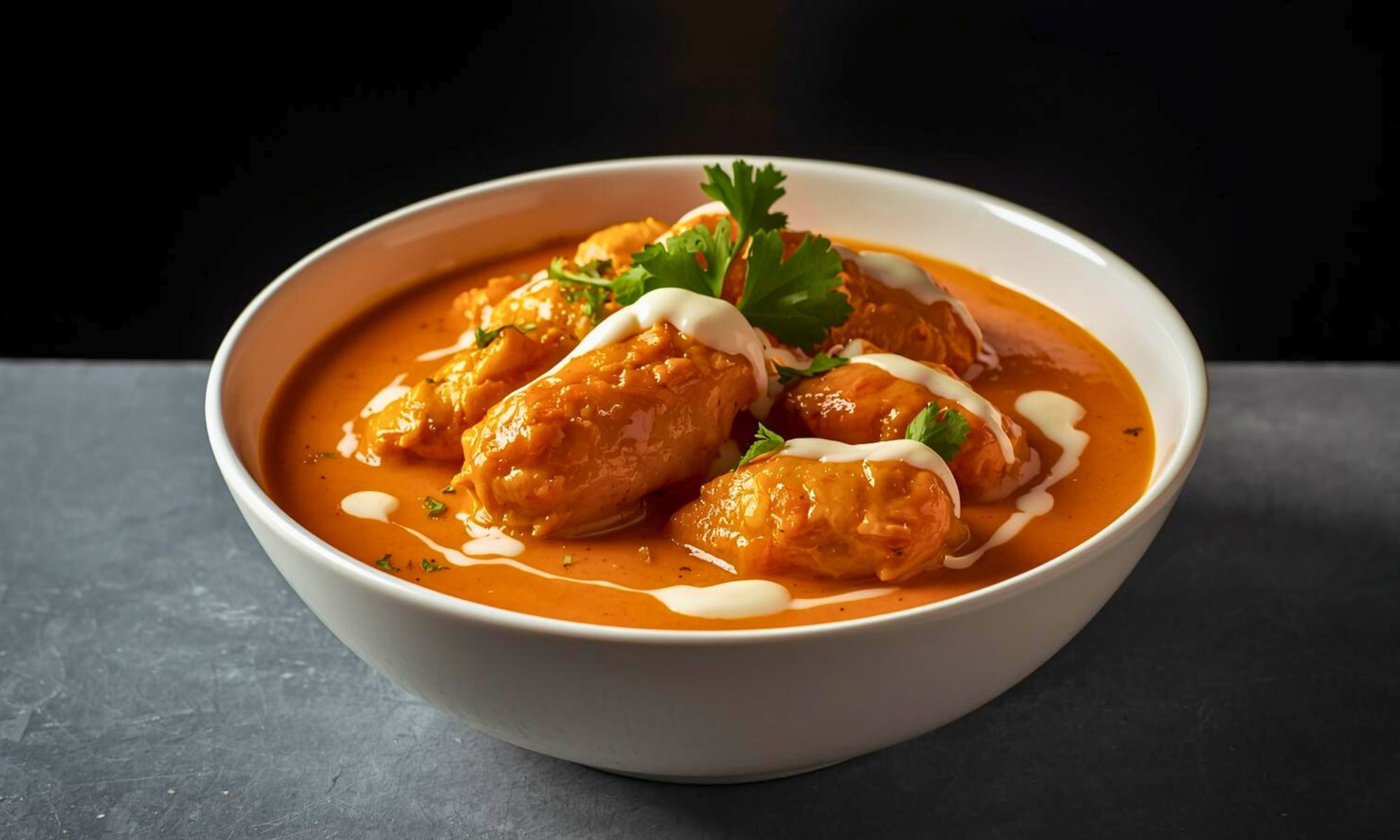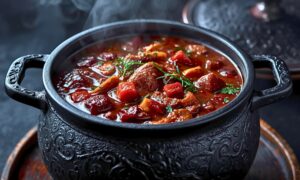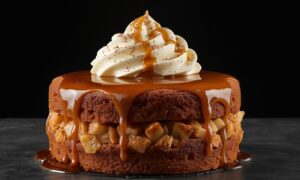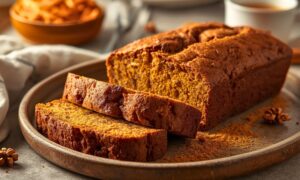Last Tuesday, I was rushing through my evening routine. Kids needed dinner, laundry was piling up. Then I remembered the chicken thawing in my fridge. Twenty five minutes later, my kitchen smelled absolutely divine. My daughter actually put down her phone. That’s the transformative power of Easy Indian Butter Chicken, it turns chaotic weeknights into something special.
This isn’t just another curry recipe. It’s your gateway to restaurant quality comfort food at home. The kind that makes your neighbors peek over the fence. The dish that’ll have your family asking for seconds. Easy Indian Butter Chicken fits perfectly into our crazy busy modern lives. No lengthy prep. No exotic ingredients. Just pure comfort in under an hour.
Butter chicken, or murgh makhani, started in Delhi back in the 1950s. Chef Kundan Lal Gujral accidentally created this masterpiece when he mixed leftover tandoori chicken with tomatoes, butter, and cream. Sometimes the best discoveries happen by pure chance. That happy accident became India’s most beloved export to Western kitchens.
What makes this version so doable? We’re skipping the tandoor. No need for specialty equipment or hard to find spices. Your regular stovetop and pantry staples will do just fine. The secret lies in building complexity without fuss, creating depth through smart techniques.
Why This Easy Indian Butter Chicken Changes Everything
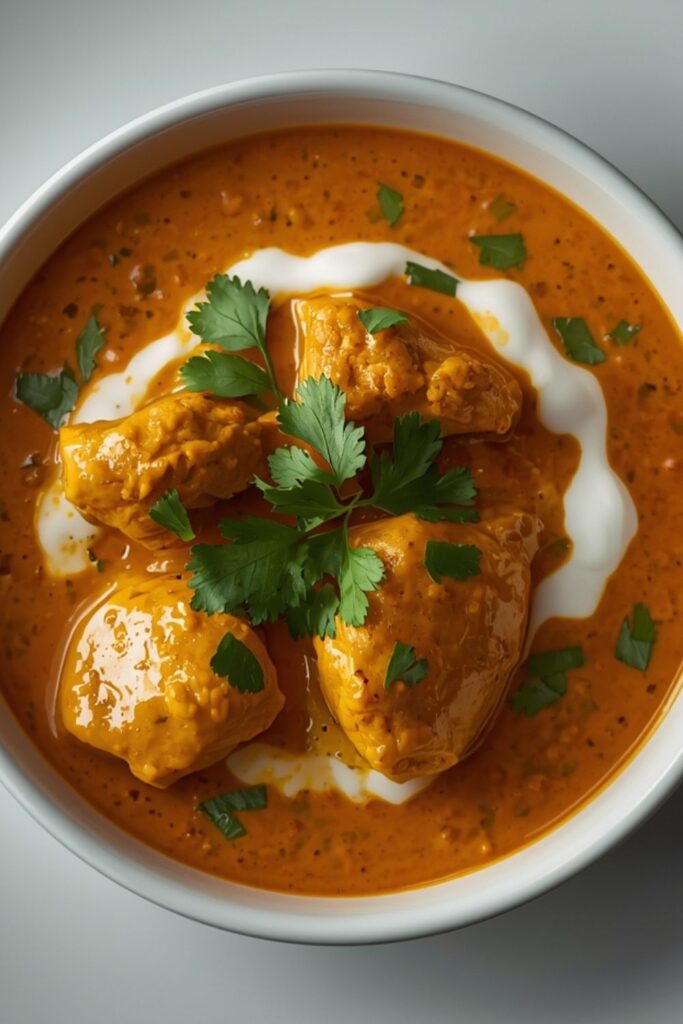
Traditional butter chicken takes hours of prep. Marinating overnight, making fresh tomato puree, grinding whole spices. Who has time for that on a Tuesday? This streamlined version delivers the same rich, velvety results with half the fuss but all the soul warming satisfaction.
The process unfolds in three stages. First, we create an aromatic foundation. Then we build the sauce with smart shortcuts. Finally, we bring it all together with tender chicken. Each step builds on the last, like a delicious symphony in your kitchen.
What sets this apart from other quick versions? We don’t sacrifice authenticity for speed. Every shortcut serves a purpose. Every ingredient earns its place. The result tastes like you spent all day cooking, but we both know you didn’t.
This recipe works for families juggling soccer practice and work calls, for college students craving real food, for anyone wanting restaurant flavors without the restaurant price tag. It’s comfort food that respects your schedule.
Essential Ingredients & Smart Kitchen Swaps
For the Chicken:
- 2 pounds boneless chicken (thighs work best)
- 1 cup plain Greek yogurt
- 2 teaspoons garam masala
- 1 teaspoon smoked paprika
- 1 teaspoon salt
- 2 tablespoons vegetable oil
For the Sauce Base:
- 2 tablespoons butter
- 1 large onion, finely diced
- 4 garlic cloves, minced
- 2 inch piece fresh ginger, grated
- 2 teaspoons ground cumin
- 1 teaspoon ground coriander
- 1 teaspoon turmeric
- 1 can (14 oz) crushed tomatoes
- 1 cup heavy cream
- 2 tablespoons tomato paste
- 1 teaspoon brown sugar
- Salt to taste
- Fresh cilantro for garnish
Smart Substitutions That Actually Work:
Can’t find garam masala? Mix equal parts cinnamon, cardamom, and cloves. Add a pinch of nutmeg if you’re feeling fancy. Store bought works perfectly fine though.
Greek yogurt running low? Regular plain yogurt does the trick. Just strain it for thirty minutes to remove excess water and prevent the sauce from getting thin.
Heavy cream making you nervous? Coconut milk creates incredible richness. Use the thick part from a chilled can. Your dairy free friends will thank you.
Fresh ginger sold out? Ground ginger works in a pinch. Use half the amount since dried spices pack more concentrated flavor.
Chicken thighs are my secret weapon here, they stay juicy through the cooking process and don’t dry out like breasts sometimes do. But if breasts are what you’ve got, cut them smaller and cook them gently.
The beauty of this recipe lies in its flexibility. Missing an ingredient? We’ve got workarounds. Dietary restrictions? No problem. This recipe adapts to your life, not the other way around.
The Step by Step Process for Perfect Results
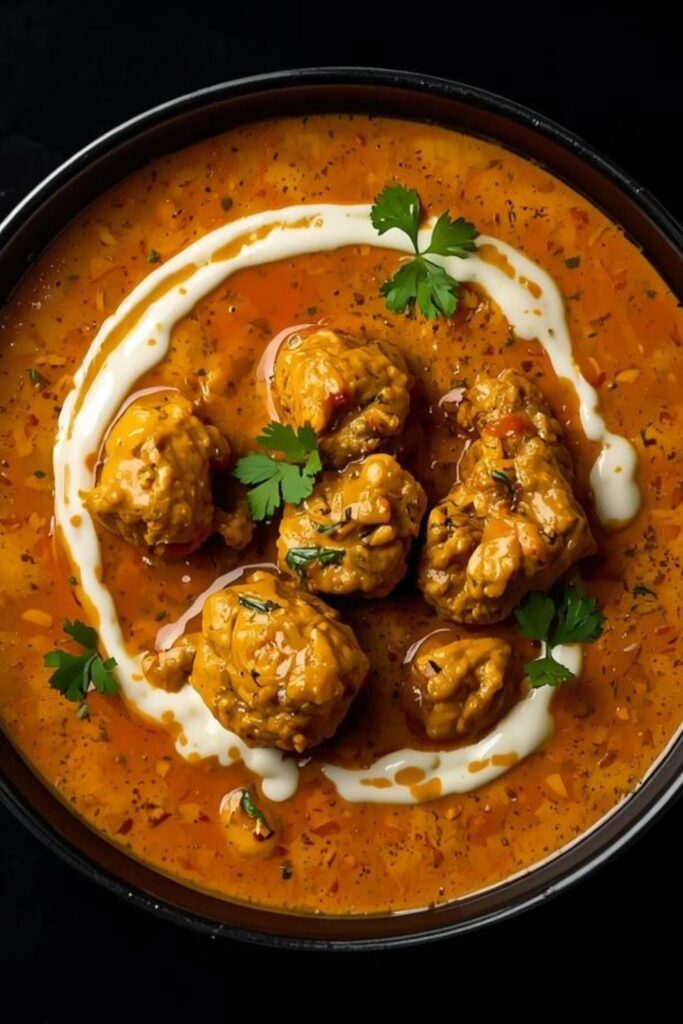
Getting the Chicken Right:
Start by cutting your chicken into bite sized pieces, about two inch chunks work perfectly. Pat them completely dry with paper towels. This step matters more than you think.
Mix yogurt, garam masala, paprika, and salt in a bowl. Toss chicken pieces until they’re completely coated. Let this sit while you prep everything else. Even ten minutes makes a difference as the yogurt tenderizes while spices penetrate.
Heat oil in your heaviest pan over medium high heat. Don’t crowd the chicken pieces, work in batches if needed. We want golden brown edges, not steamed chicken. About three minutes per side does it. They don’t need to be fully cooked, just browned for color.
Building the Aromatic Foundation:
Lower heat to medium. Add butter to the same pan and let it foam and settle. Those brown bits from the chicken? That’s flavor gold we’re building on.
Add diced onions with a pinch of salt. Cook until they’re soft and golden, about eight minutes. Don’t rush this step, properly cooked onions add sweetness and depth that forms the backbone of great Indian cooking.
Toss in minced garlic and grated ginger. Cook for another minute until fragrant. Your kitchen should smell absolutely incredible right now. Add cumin, coriander, and turmeric. Stir constantly for thirty seconds, we’re blooming the spices and waking up their essential oils.
Creating the Silky Sauce:
Add tomato paste and stir for another minute. This concentrates the tomato flavor and prevents that raw paste taste. Pour in crushed tomatoes and brown sugar, then season with salt.
Let this simmer for fifteen minutes. The sauce will thicken slightly as tomatoes break down and meld with the spices. Taste and adjust seasoning, it should be rich, slightly sweet, with warm spice notes.
Here’s where the transformation happens. Lower heat to the gentlest simmer. Slowly pour in heavy cream while stirring, don’t dump it all at once or the sauce might curdle from temperature shock. Gentle incorporation is key.
Add the browned chicken back to the pan. Let everything simmer together for another ten minutes so the chicken finishes cooking in this luxurious sauce and absorbs all those beautiful flavors.
The Science Behind Perfect Results
This recipe works brilliantly because it builds complexity through technique. The yogurt marinade does double duty, acid tenderizes tough proteins while dairy provides cooling contrast to warm spices.
Browning the chicken creates the Maillard reaction, developing complex flavors when proteins meet high heat. Those golden edges add dimension you can’t get from poaching. Even though we’re finishing in sauce, that initial sear makes an enormous difference.
The tomato base provides acidity to balance rich cream. Onions add natural sweetness. Fresh aromatics like garlic and ginger brighten everything up. Each element serves a purpose, nothing’s there just for show.
Temperature control makes or breaks this dish. Too high heat curdles the cream. Too low heat never develops proper flavors. Medium heat gives you control and lets flavors meld without disasters.
Understanding these principles helps you master the technique. You’re not just following steps, you’re becoming a better cook. Knowledge builds confidence in the kitchen.
Making It Beautiful & Delicious
Plating Like a Pro:
Serve over basmati rice or warm naan bread so the starch soaks up that incredible sauce. Don’t let a single drop go to waste. Garnish with fresh cilantro and maybe a dollop of yogurt.
For special occasions, try this trick: warm your serving bowls in a low oven. Hot bowls keep the curry at perfect temperature longer. Little touches make big impressions.
Perfect Pairings:
This curry loves company. Serve with cucumber raita to cool things down, the crisp freshness contrasts beautifully with rich, warm curry. A simple side of roasted vegetables adds color and nutrition.
Wine pairing? A crisp Riesling handles the spice beautifully. Beer lovers should grab something malty and smooth, the hops complement the tomato base perfectly.
Leftover Brilliance:
This curry improves overnight as flavors meld and deepen in the fridge. Reheat gently on the stovetop, adding a splash of cream if it gets too thick. Makes incredible lunch the next day.
Try it over baked sweet potatoes for something different, or toss with cooked pasta for fusion comfort food. The sauce is versatile enough for creative experiments, and these leftovers taste just as good anytime.
Mastering Your Technique
Timing Is Everything:
Start to finish, this takes about forty five minutes, most of that hands off simmering time. Perfect for weeknight cooking when you need something impressive but manageable.
Prep all ingredients before you start cooking, Indian cooking moves quickly once you begin. Having everything ready prevents burning spices or overcooking chicken.
Common Pitfalls and How to Dodge Them:
The biggest mistake? Adding cold cream to hot sauce. Temperature shock causes curdling. Always let cream come to room temperature first, or temper it with a spoonful of warm sauce.
Don’t skip browning the chicken. I know it’s tempting when you’re tired, but those caramelized edges add dimension you can’t replicate any other way.
Watch the aromatics carefully. Garlic and ginger burn quickly. Keep heat at medium and stay focused, burnt garlic tastes bitter and overwhelms other flavors.
Creative Variations:
Once you’ve mastered the basic version, try these twists. Add a cinnamon stick while building the sauce base (remove before serving) for subtle warmth.
Feeling adventurous? Stir in a tablespoon of almond butter for richness and slight nuttiness, very traditional in Mughlai cooking.
For heat lovers, add finely chopped green chilies with the aromatics, or finish with a pinch of cayenne pepper. Build heat gradually until it’s perfect for your family.
Making This Recipe Your Own
Dietary Modifications:
Vegetarians can substitute paneer or cauliflower florets. Follow the same process but reduce cooking time since vegetables need less time than chicken to become tender.
Vegan version? Skip the yogurt marinade. Use coconut milk instead of cream and vegetable oil instead of butter. The flavors still sing beautifully.
Low carb folks, serve over cauliflower rice or zucchini noodles. The sauce is rich enough to satisfy without traditional starches.
Spice Level Adjustments:
This recipe sits at medium mild heat level, perfect for most families. Want more fire? Add jalapeños with the onions or stir in hot sauce at the end.
Too spicy for little ones? Extra cream cools things down. A spoonful of sugar also tames excessive heat, dairy products are your best friends for spice emergencies.
Batch Cooking Wisdom:
Double this recipe easily, it freezes beautifully for up to three months. Cool completely before freezing, then thaw overnight in the refrigerator.
Reheat gently on stovetop, adding fresh cream if needed. The spices might mellow during freezing, so taste and adjust seasoning after reheating.
Meal prep enthusiasts love this dish. Make it Sunday, eat all week, and portion into containers for grab and go lunches.
Pro Tips for Perfection
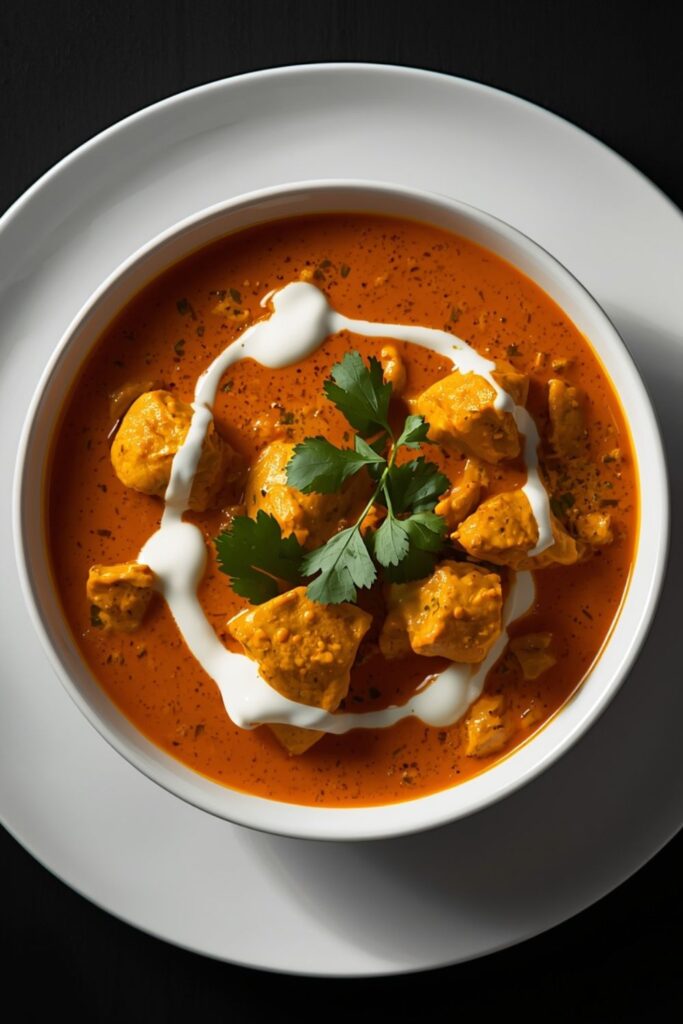
Equipment Matters:
Heavy bottomed pans distribute heat evenly and prevent scorching delicate spices. Cast iron or enameled Dutch ovens work beautifully, thin pans create hot spots that create burnt flavors.
An immersion blender transforms this dish. Want silky smooth sauce? Blend it briefly. Prefer chunky texture? Skip the blending. You control the final result.
Ingredient Quality Makes the Difference:
Fresh spices beat old ones every time. Grind whole spices when possible and toast them lightly first, the aroma difference is incredible.
Good tomatoes matter more than you think. San Marzano tomatoes are worth the extra cost since they’re naturally sweeter and less acidic than regular varieties.
Chicken quality shows in the final dish. Free range tastes better than factory farmed, and organic isn’t just marketing, it’s flavor insurance.
Storage and Reheating Secrets:
Store sauce and chicken separately when possible to prevent overcooking during reheating. Combine just before serving to keep chicken tender and perfect.
Freeze in meal sized portions, ice cube trays work for single servings. Pop out frozen cubes into freezer bags and label everything with dates.
Never refreeze thawed curry. Food safety first, one freeze thaw cycle only. After that, consume within three days.
Bringing It All Together
This Easy Indian Butter Chicken proves that restaurant quality flavors don’t require professional training, just good ingredients, smart techniques, and a little patience. The kind of dish that makes ordinary Tuesday feel special.
Remember, cooking is about feeding people you care about. Don’t stress about perfection. Focus on love and flavor, and your family will taste the difference.
The beauty of this recipe lies in its flexibility. Make it yours. Adjust spices to your family’s taste. Swap ingredients based on what’s available. Cooking should feel like play, not work.
Most importantly, trust your instincts. Taste as you go. Season with confidence. Your palate knows what it likes, and this recipe is just your starting point.
Whether you’re cooking for picky kids or adventurous adults, this Easy Indian Butter Chicken delivers. It bridges cultures on your dinner table and creates memories around shared meals. That’s the real transformation happening in your kitchen.
Frequently Asked Questions About Indian Butter Chicken
Can I make this butter chicken ahead of time?
Absolutely! This curry tastes even better the next day as flavors have time to meld and deepen overnight, creating a rich, irresistible harmony. Store in the refrigerator for up to three days. Reheat gently on the stovetop over low heat, adding a splash of cream if it gets too thick for the perfect consistency. Never microwave curry, as it ruins the texture and delicate balance of flavors.
What’s the best way to store leftover butter chicken?
Cool completely before refrigerating to lock in freshness and flavor. Store in airtight containers for up to four days safely. For longer storage, freeze individual portions in freezer bags, clearly labeled with the date and contents. Frozen curry stays perfectly good for three months. Thaw gently overnight in the fridge before reheating for best taste.
My sauce curdled, can I fix it?
Don’t panic! Remove from heat immediately and let it cool for five minutes. Whisk in a tablespoon of cold cream gradually, sometimes this smooths things out. If not, blend the sauce with an immersion blender and strain if needed. Prevention is easier though, always add room temperature cream slowly.
Can I substitute chicken breasts for thighs?
Yes, but adjust your technique slightly. Chicken breasts dry out faster, so cut them smaller and reduce cooking time for best results. Check for doneness earlier, as they’re done at 165°F internal temperature, ensuring safety and tenderness. Thighs stay juicier, richer, and more forgiving, but breasts work perfectly fine with careful attention and a little extra mindfulness while cooking.
How do I make this spicier without overwhelming other flavors?
Build heat gradually with multiple sources. Add minced jalapeños with the aromatics, stir in cayenne pepper with other spices, or finish with hot sauce or fresh chilies. Taste between additionsyou can always add more heat, but you can’t take it away. Keep dairy nearby to cool things down if needed.

Swiftly Captions by Tina Smith — Quick, flavorful food recipes made simple, bringing fresh inspiration to your kitchen every day
